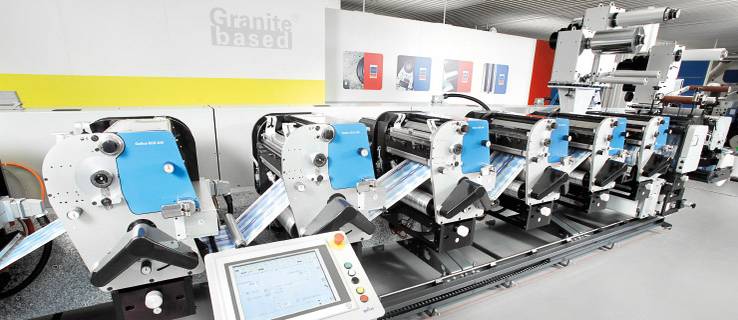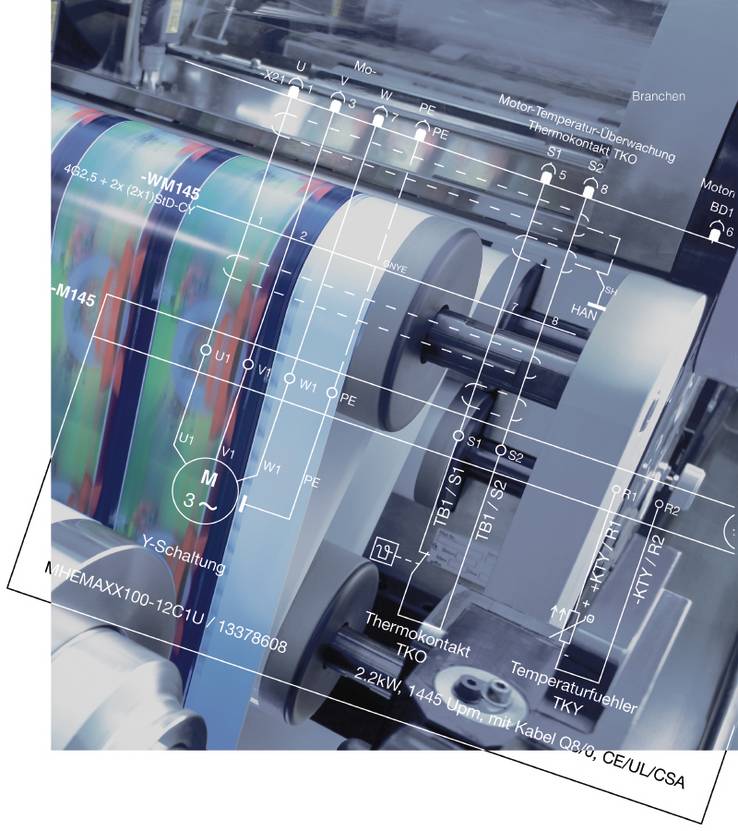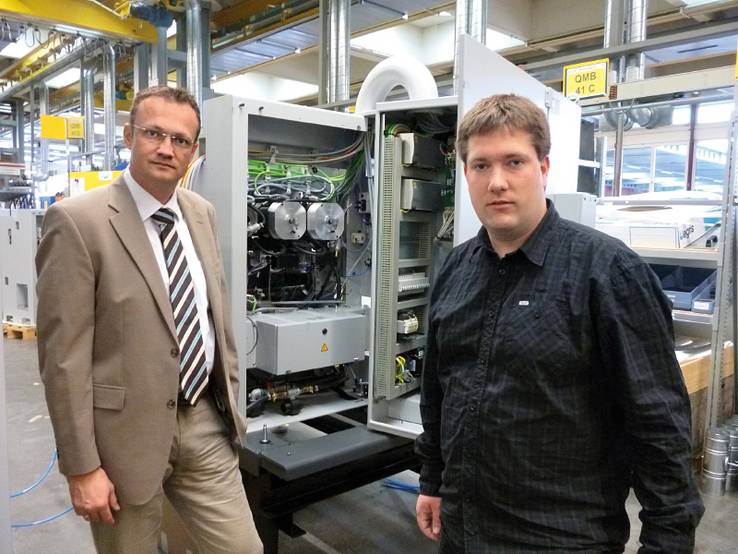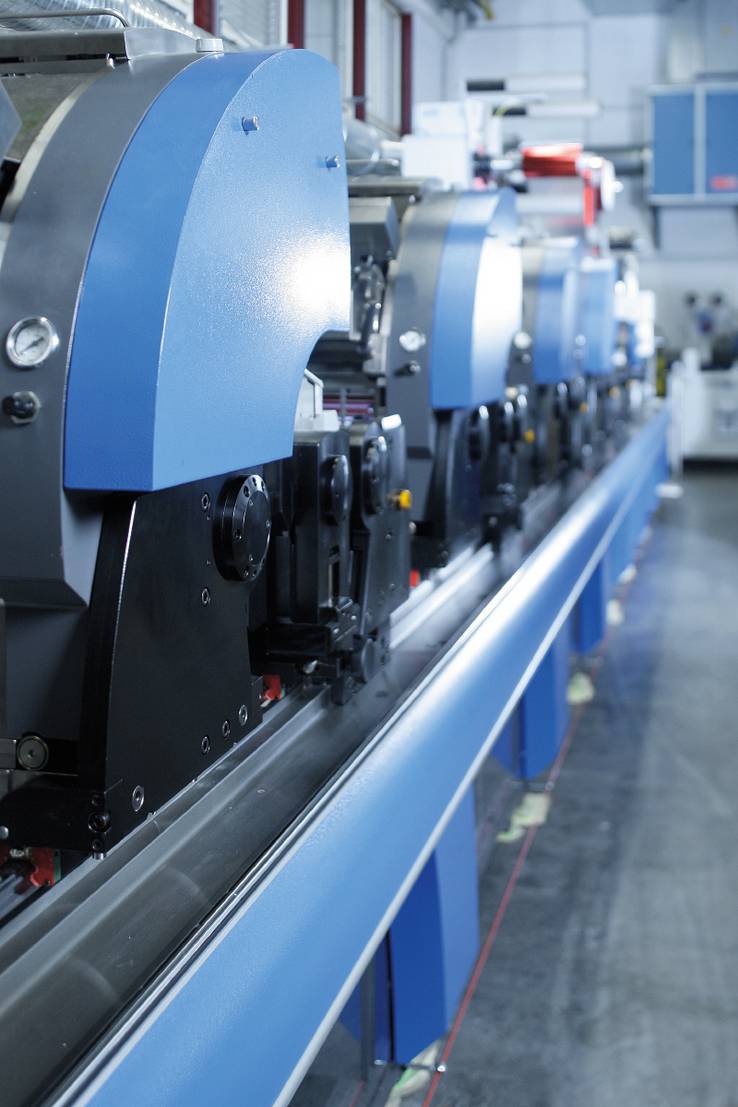Data in Flux
Safeguarding against error and ensuring efficiency, integrated process control is particularly important to the Swiss market leader.
Narrow- and wide-web rotary presses for labels and folding cartons are the specialty of Gallus Ferd. Rüesch AG, a family-run business for three generations with headquarters in St Gallen, Switzerland. The market leader in label printing solutions has a strategic partner in global market leader Heidelberger Druckmaschinen AG, which holds a 30 per cent share in Gallus since 1999. Since 2012, wiring plans and material lists for complex and custom-built systems are generated using EPLAN Electric P8 Professional. With both a height and depth of about three metres, Gallus’ web presses, in which media rolls are processed at speeds of up to 160 metres per minute, can be 10 or 20 metres long for label printing; a folding carton printing line easily reaches 30 to 40 metres. “Our machines are modular and have split schemes,” says Bernd Hofstädter, in charge of Strategic Sourcing Management at Gallus. “We never rely on an existing system simply to modify them.” Modular Construction Promotes Quality The modular structure supports error prevention and quality assurance, provided that the elements, components and services in use can also be effectively combined in the electrical design for a custom-made, customer-specific plant. Continuous data exchange between all relevant areas must be ensured - from material sourcing to in-house and supplier production to evaluation and documentation. EPLAN Electric P8 Professional was introduced “because it is a modern system that represents the current state of technology and is the standard for plant design and construction,” says Hofstädter. Another advantage, due to the widespread use of EPLAN, is that the latest manufacturer data is available. Gallus can access the libraries of the component manufacturers through the EPLAN Data Portal, in which specifications can be discovered “quite quickly”, as well as directly from the manufacturers’ websites. “Component maintenance, an often unpleasant task, is thus considerably simplified, because the component data can be easily transferred and only individual information needs to be supplemented,” says Michael Holzner, Gallus’ head of Electrical Engineering. For a small team unable to make a major expenditure for system maintenance, the timely supply of easy-to-integrate manufacturer data is very helpful, in the interest of efficiency alone. And because the user-friendly EPLAN operating concept is strictly implemented in all modules, every single employee in all disciplines can join in - “even trainees.” Design with Placeholders Error prevention begins at the design stage. First, individual functions are inserted as non-specific symbols. Once the development phase is reached they are recorded as specific items, which are easily found in the database and adopted. Not only does this procedure provide a great deal of freedom in the initial phase of a project, it also prevents transmission errors. “We have a smooth process, from concept to design to finished schematic,” says Michael Holzner. With EPLAN’s automatically generated parts lists and documentation, Gallus customers receive specific analyses and wiring plans. Bernd Hofstädter also appreciates the fact that the EPLAN Platform’s built-in functions enable easy definition and adjustment of filter queries. Another plus: Delivering automatically generated parts lists to manufacturing and material sourcing departments can prevent many mistakes and save time. An Element of Lifecycle Management In future, the electrical design will be directly linked to Product Lifecycle Management (PLM) and integrated into the ERP system for accurate and automatically controlled material sourcing. EPLAN Electric P8 Professional’s potential for integration into various PLM and ERP systems (thanks to its versatile interfaces) was another key reason for the upgrade. As well as improved communication with outside suppliers. In PLC software, however, Gallus has taken the opposite tack, shifting from third-party to in-house development several years ago. The I/O data for the PLC is accessible and easy to export and adapt. “With EPLAN Electric P8’s built-in tools, no additional programming effort is necessary,” states Michael Holzner. Currently, data exchange, addressing and function indication are performed using XML files. But Bernd Hofstadter and Michael Holzner have already contemplated the next step in integration: Automation Studio, B&R’s automation software, will be utilised for Gallus’ future hardware configurations. And because EPLAN and B&R have effected a deep integration of their engineering systems, hardware configurations (including I/O mapping) can even be directly adopted into Automation Studio via a dedicated interface, preventing errors due to duplicate master data creation. The Upgrade Paid Off Has the upgrade from the previous system to EPLAN Electric P8 paid off? Definitely, says Bernd Hofstädter, although data collection was incredibly time-consuming, because data from several decades had to be acquired gradually. EPLAN provided strong support by preparing Gallus employees with basic training for the whole team and additional training for administrators. “The training covered everything and still left room for discussion of individual problems,” Holzner recalls. EPLAN consultants were on hand to help during implementation, offering solutions and sometimes plainly stating what was not possible. The two Gallus managers found it a positive experience. “Many suppliers promise the moon,” says Holzner, “but EPLAN keeps its promises.”





